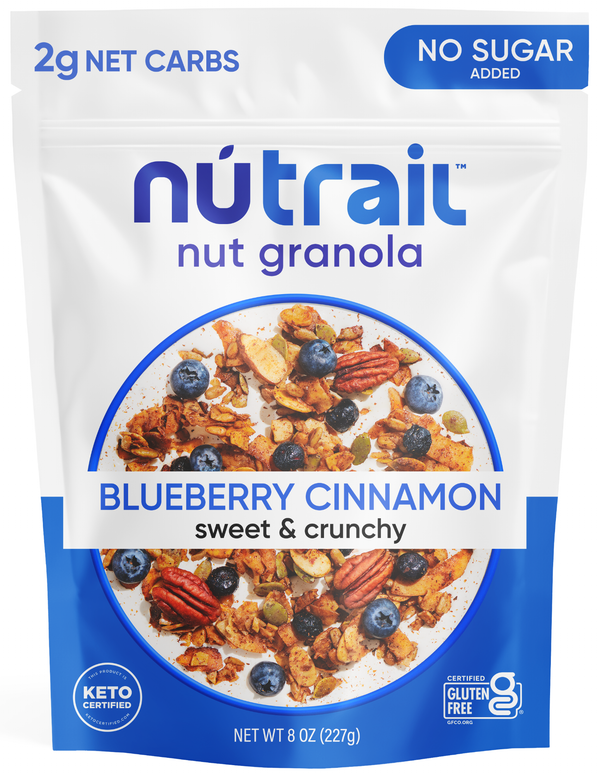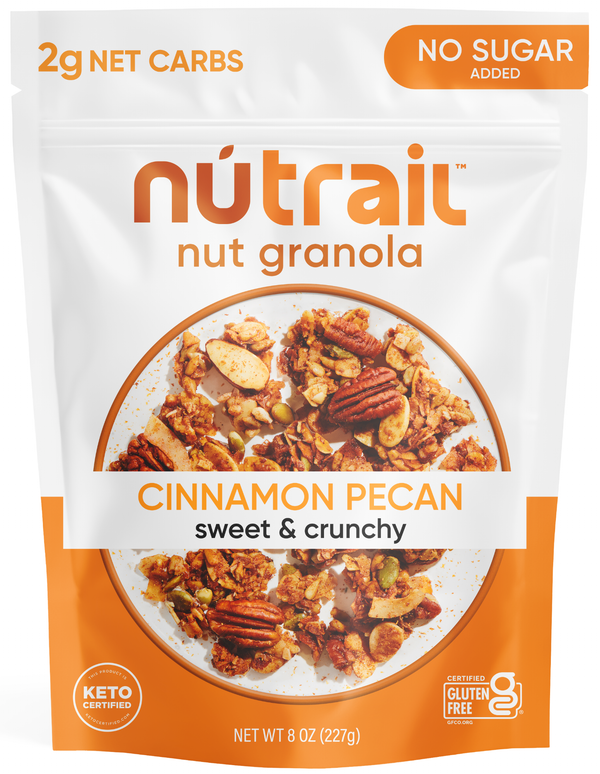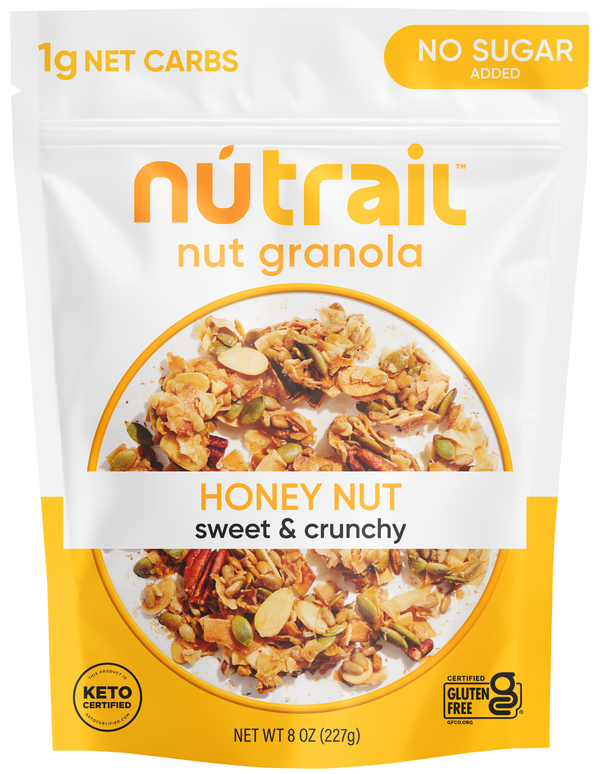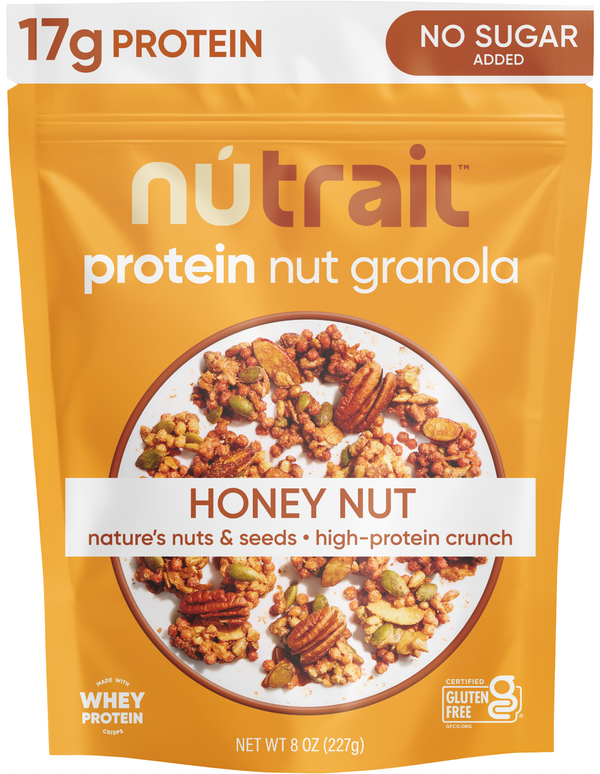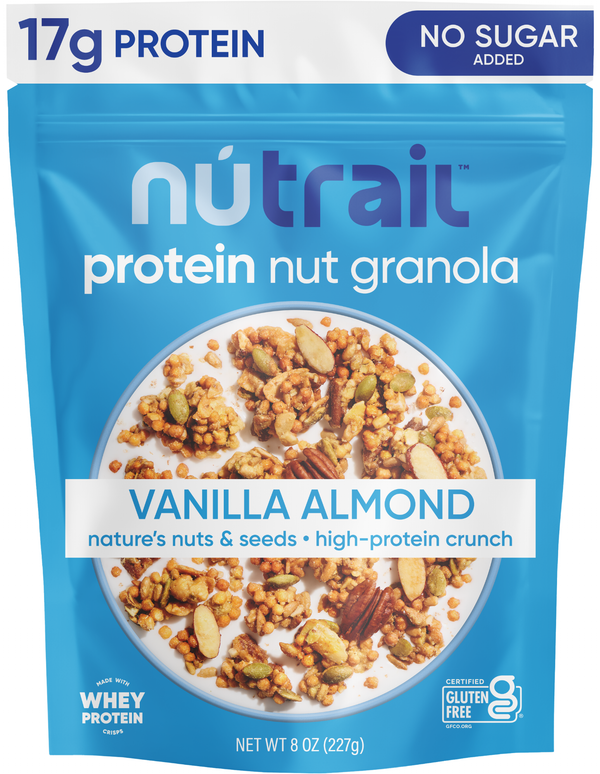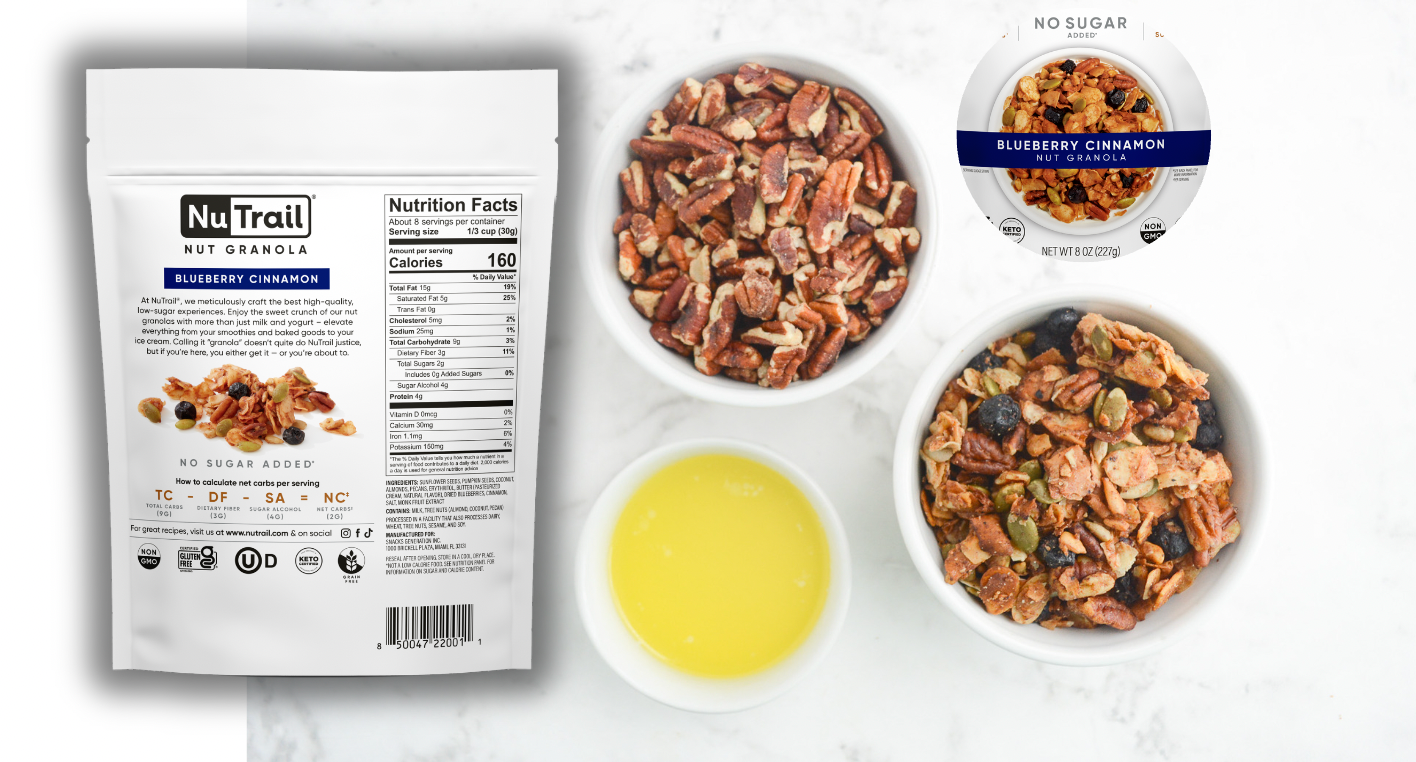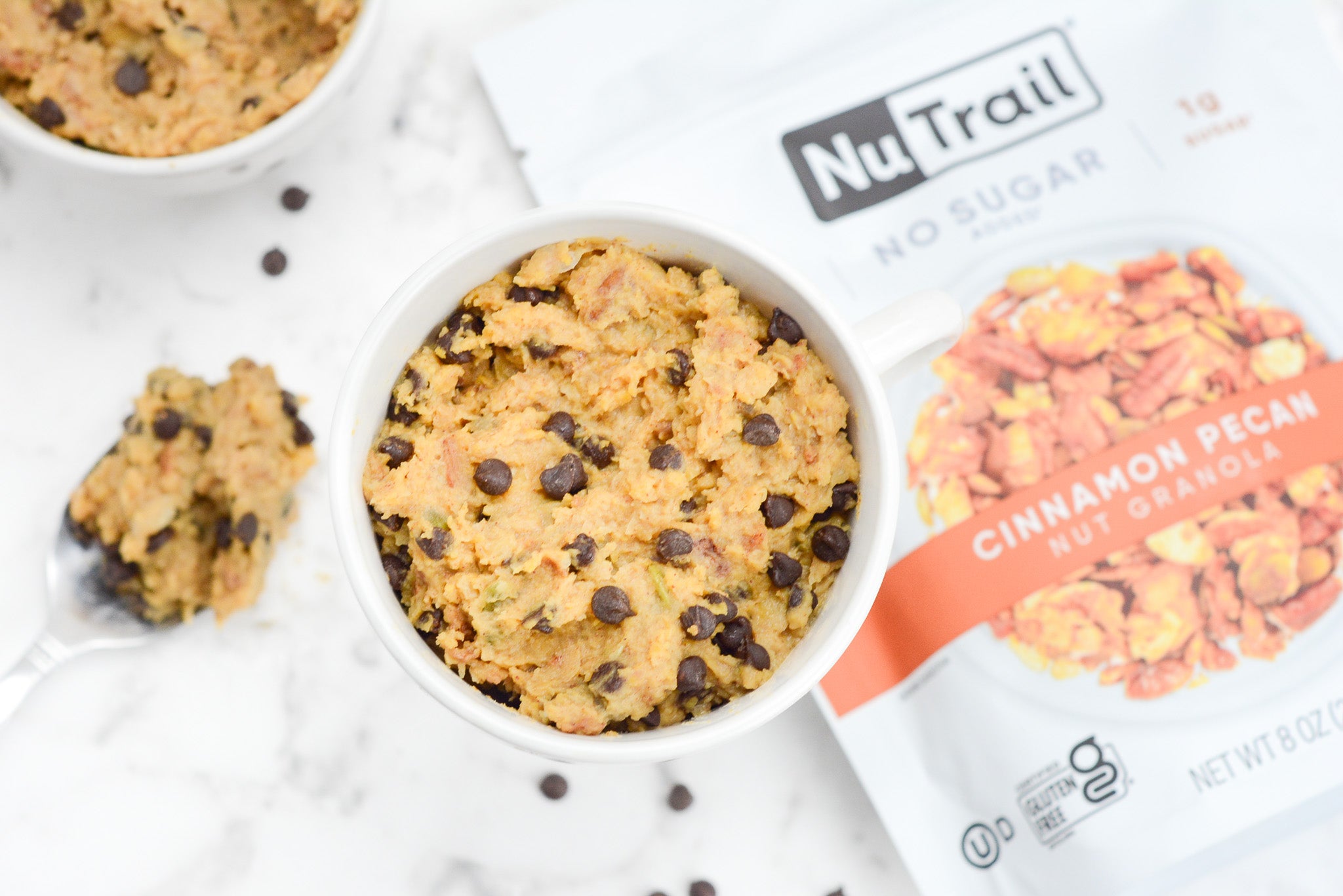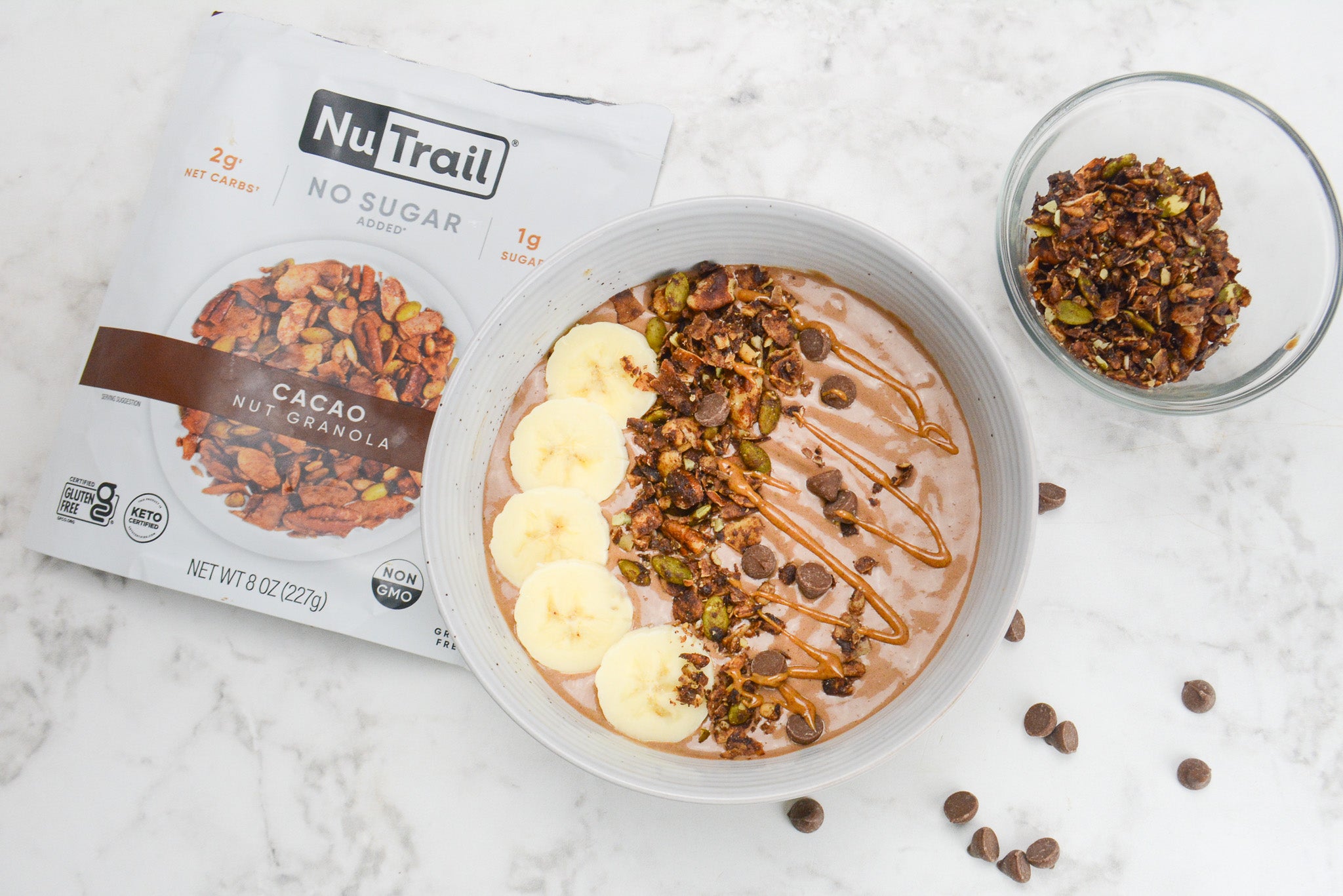The Nutrition Facts label provides a lot of valuable information on the products you consume on a daily basis, but may feel overwhelming to read and understand. In this blog post, Registered Dietitian, Chelsea Rice, discusses how to read and interpret the Nutrition Facts label, leaving you feeling more confident the next time you are reading labels at the grocery store.
Step 1: Start with the serving size and servings per container.
The first thing you want to look for on the Nutrition Facts label is the serving size. This is important because all of the other information on the label is based on this number. Although, this does not always mean this is the amount of food you should or have to eat. For example, the serving size of NuTrail Nut Granola is ⅓ cup. However, you may be eating a small snack and only want ¼ cup. On the other hand, if you are following a high calorie diet you might want a larger serving, say ⅔ cup.
Next, look at the number of servings per container. This tells you how many servings are in the entire product. If the package contains multiple servings and you eat the entire package, you need to multiply all the numbers on the label by the number of servings to accurately reflect your intake. For example, if a product contains 4 servings and you eat the whole package, you need to multiply all of the numbers on the food label by 4.
Step 2: Look at the calories per serving and per container.
Calories tell you how much energy you get from a serving of the product. For example, in one serving (⅓ cup) of NuTrail Nut Granola, there are 160 calories. However, if you were to eat double the serving (⅔ cup), then you would be consuming 320 calories. There are many ways to calculate the approximate amount of calories you should be consuming in a day. The USDA has an online tool that can help you understand your estimated needs. You can find this tool at https://www.nal.usda.gov/human-nutrition-and-food-safety/dri-calculator. To determine your exact nutritional needs, it is always best to speak to your registered dietitian. Talking 1:1 with a health professional provides you with the most appropriate calories and macronutrients based on your health goals, medical history, wellness routine, and more.
Step 3: Understand the nutrients listed.
The nutrition facts label includes a lot of additional nutrients including total fat, saturated fat, trans fat, cholesterol, sodium, total carbohydrates, dietary fiber, total sugars, added sugars, protein, and vitamins/minerals such as vitamin D, calcium, iron, and potassium. Look for foods that contain more of the nutrients you want to get more of and less of the nutrients you may want to limit based on your nutritional needs. On average, most individuals want to limit their intake of saturated fat, trans fat, sodium, and added sugar. On the other hand, on average, most individuals want to increase their intake of dietary fiber, vitamin D, calcium, iron, and potassium.
Step 4: Use the percent daily values as a guide.
The percent daily value (%DV) is based on a 2,000 calorie diet and shows how much of a nutrient contributes to a total daily diet. The %DV can help you determine if a serving of food is high or low in a nutrient. In general, a 5% DV or less of a nutrient per serving is considered low. On the other hand, a 20% DV or more of a nutrient per serving is considered high. For example, if a product contains 25% DV of sodium, that means that product is high in sodium. If a product contains 4% DV of sodium, that means the product is low in sodium.
Step 5: Put it all together.
As stated above, it is important to note that the Nutrition Facts label is based on a 2,000 calorie per day diet. Remember, your individual nutritional needs may vary based on your health goals, medical history, wellness routine, and more. Also, some products may not have a Nutrition Facts label easily accessible, such as fresh fruits and vegetables, or foods prepared in a restaurant. In these cases, it can be helpful to consult with your registered dietitian to better understand the nutritional content of these foods.
The Nutrition Facts label is an important tool for making informed food choices. By understanding the serving size, calories, macronutrients, micronutrients, and percent daily value, you can make healthier choices and feel more confident when you are grocery shopping for you and your family!
